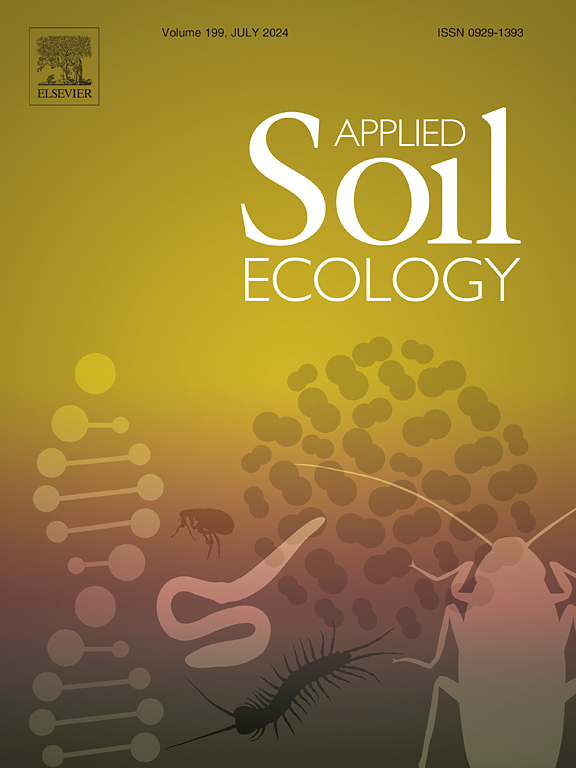Urban forest soil properties and microbial characteristics: seasonal and stand-specific variations
IF 4.8
2区 农林科学
Q1 SOIL SCIENCE
引用次数: 0
Abstract
Urban forests are essential to maintain the stability of urban ecosystems. Soil microorganisms in forest environments are critical components of these ecosystems and are subject to various influencing factors. This study examined six distinct forest soils in the Zhuyu Bay Scenic Area of Yangzhou City, Jiangsu Province, China. The forest types investigated were mixed pine and cypress forest (PC), Metasequoia glyptostroboides (MG), Cornus officinalis (CO), mixed broad-leaved shrub forest (MS), mixed broad-leaved tree forest (MT), and bamboo forest (BF). The research involved measuring soil physicochemical properties, microbial biomass, and soil enzyme activity across four seasons. We analyzed the structural characteristics of the bacterial and fungal communities in both rhizosphere and bulk soil samples. Upon thorough analysis, BF and MS were determined to be most effective tree species for urban forest ecosystems. Mantel analysis revealed that Electrical Conductivity (EC), Available potassium (AK), and Microbial Biomass Carbon (MBC) are the primary soil factors affecting rhizosphere microorganisms, while Total Nitrogen (TN) and AK predominantly affected bulk soil microorganisms. Finally, through a random forest model and a Structural Equation Modeling (SEM), it revealed that soil physicochemical properties, rather than microbial biomass and soil enzymatic activity, are the dominant factors influencing seasonal variations in soil microbial communities.
求助全文
约1分钟内获得全文
求助全文
来源期刊

Applied Soil Ecology
农林科学-土壤科学
CiteScore
9.70
自引率
4.20%
发文量
363
审稿时长
5.3 months
期刊介绍:
Applied Soil Ecology addresses the role of soil organisms and their interactions in relation to: sustainability and productivity, nutrient cycling and other soil processes, the maintenance of soil functions, the impact of human activities on soil ecosystems and bio(techno)logical control of soil-inhabiting pests, diseases and weeds.
 求助内容:
求助内容: 应助结果提醒方式:
应助结果提醒方式:


